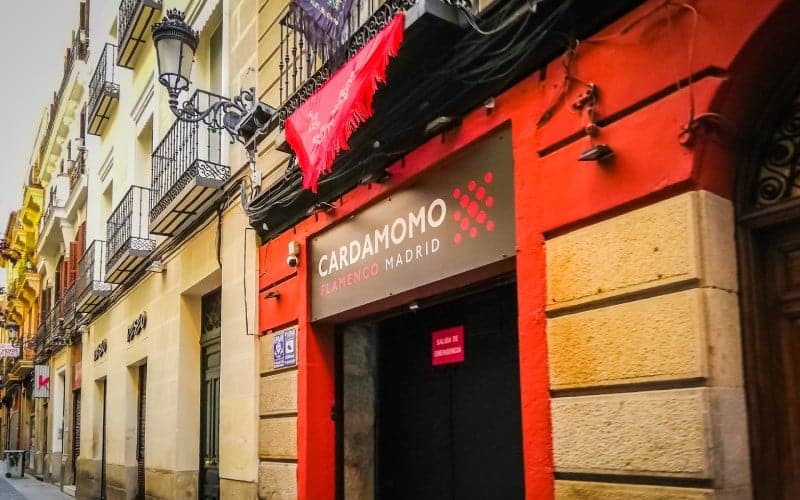
Flamenco is a diverse way of artistic expression that grew from the mixture of different cultures, and it slowly took root in the region of Andalusia. It was first recorded in the second half of the 18th century, where different fiestas and gatherings were held. Romani people usually took the lead in said events. Cádiz, Jerez de la Frontera and the neighbourhood of Triana in Seville are some of the historical epicentres of flamenco one should take into account while exploring this dance and music style in Spain. Some might not know this, but one can also enjoy quality flamenco in Madrid.

A performance in Café de Chinitas, Madrid. | Shutterstock
It was in the 18th century, around 1860, that the venues known as “cafés cantantes”, places for leisure that preceded the current flamenco tablaos, became popular. Back then, those venues were seen as frivolous, so much so that some social spheres condemned their lack of decency. Either way, these venues attracted all kinds of audiences, especially lower- and middle-class people. It was thanks to them that the love for flamenco spread throughout Spain, and by the end of the 19th century, this art form played a major role in the social life of the country.
Madrid was one of the epicentres of flamenco in the late 19th century and the early 20th century as well. In fact, many prominent artists moved to the capital, and thus the number of flamenco shows increased. During the twenties, the theatre known as Teatro Pavón, which we can still find in the street of Embajadores, first held the popular contest called Copa Pavón. Their aim was to acknowledge the artistry of the cantaores, increase their social prestige and make flamenco reach a wider audience.
The first competition included renowned flamenco artists like Niño Escacena, Pepe Marchena or Manuel Vallejo, who ended up winning the contest. This way, the flamenco shows, which were also called Ópera Flamenca at the time, became increasingly popular. However, it was somewhat controversial, because it left out some beloved palos or singing styles, such as the bulería. There were also some good years coming though, and flamenco lovers were able to enjoy the shows of artists like La Niña de los Peines or, later on, Juanito Valderrama.

Cardamomo, one of the most popular flamenco tablaos in Madrid. | Shutterstock
The legacy of the wonderful twenties still remains in Madrid, as one can see in all the different tablaos that have been working for decades in Spain’s capital. The most popular one is probably Corral de la Morería, whose origin goes back to 1956. It has even been recognised as the best flamenco tablao in the world. The uninterrupted and varied performances that take place in Corral de la Morería blend in with a traditional cuisine that has never forgotten its roots and culture. This stage has witnessed shows by such significant flamenco artists as Paco de Lucía, who played there his iconic song Entre dos aguas in 1981.
The tablao of Villa Rosa is even older. It opened its doors in the square of Santa Ana in 1911, although it was originally a tapas bar. By the end of the decade, it drastically changed to become “la Catedral del Flamenco” (“the Flamenco Cathedral”), as it is still known today. It was closed for a year in the early sixties, but by the seventies its old lively splendour was already restored, and it has remained that way since.
We could keep adding interesting venues to the list. For instance, there is Cardamomo, which opened in 1994. Moreover, the neighbourhood of Vallecas, far from the city centre of Madrid, holds the tablao of El Cortijo, one of those venues of flamenco shows that have gained both national and international fame. Considering all that, it is safe to assume that one can definitely enjoy flamenco in Madrid.